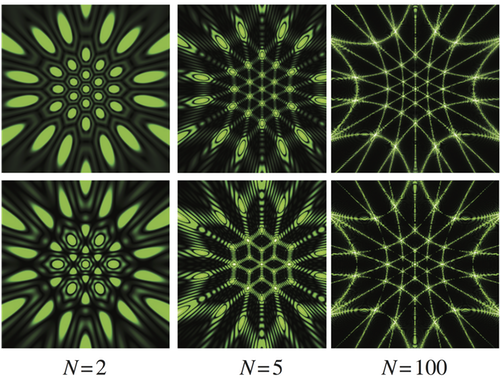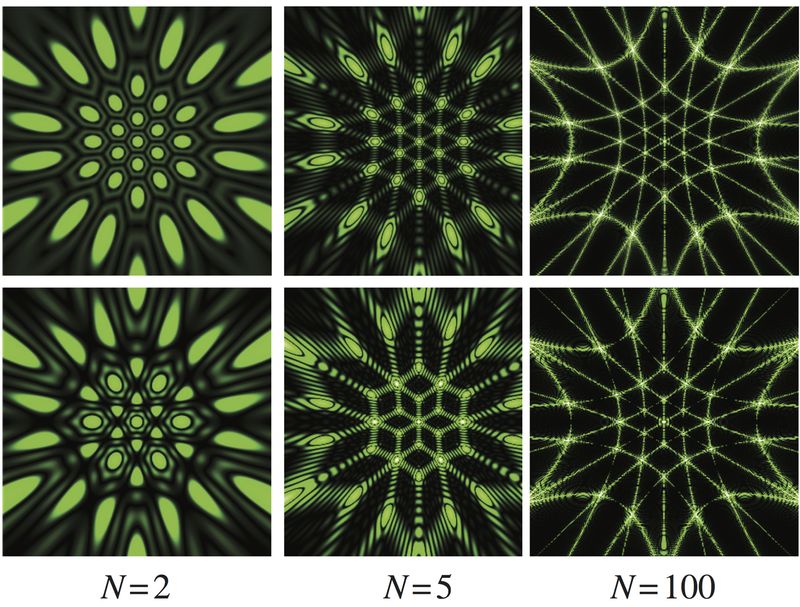Image—Honeycomb Diffraction
Physicists are seemingly obsessed with the one-atom-thick, all-carbon material graphene, thanks to its surprising electronic and mechanical properties. Now a research team has exhaustively studied the optical properties of an analogous “photonic graphene”—a honeycomb structure made of plastic—including producing theoretical predictions of the structure’s optical diffraction pattern. The theory and experiments show that the diffraction is strong and varies with the number of honeycomb cells in the photonic structure. One can even determine the precise size and geometry of the microscopic sample from its diffraction pattern.
Photonic crystals are periodic structures in which photons behave the way electrons do in traditional materials. Researchers hope to develop photonic devices that manipulate light as effectively as semiconductors manipulate electrons. When graphene appeared to have unique and potentially useful electronic properties, it was natural that researchers would develop a photonic analogue having the same two-dimensional, honeycomb structure.
There have been many studies of photonic graphene, investigating various details of light interacting with the structure, often at infrared or microwave wavelengths, but no comprehensive look at diffraction and transmission of visible light. So Kirill Samusev of ITMO University in St. Petersburg, Russia, and his colleagues performed calculations and experiments investigating photonic graphene samples with a wide range of sizes, all with honeycomb cells 1 micrometer across. They studied the band structure—the energy-momentum relationship for photons—as well as diffraction patterns and transmission spectra.
The team’s calculated diffraction patterns matched their experimental observations and showed that strong diffraction patterns can appear even for samples with only a small number of honeycomb cells. In fact, they could tell the size and geometry of a sample from the diffraction pattern alone, a result that could save future engineers the trouble of using expensive electron microscopes.
This research is published in Physical Review A.
–David Ehrenstein
David Ehrenstein is a Senior Editor for Physics Magazine.





